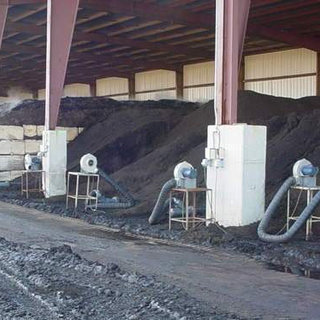Composting Methodologies: Learn how compost is created
Composting is not just pilling up waste and leaves so it turns to healthy soil, it is also an industry that is rapidly growing around the country and generating jobs on the way. According to the Institute of Local Self-Reliance, composting facilities could support twice as many jobs as landfills and 17 more jobs than incinerators.
How compost is created?
To understand how all those jobs are supported it is important to learn the process of how compost is created. The EPA has a complete list:

Onsite composting
Composting in your backyard! Involves a compost pile that is moved periodically so it receives air. It's a great method to compost leaves, yard trimmings and small quantities of food scraps.

Vermicomposting
Composting with worms. The worms break down this material into high-quality compost called castings. Food scraps, paper and yard trimmings such as grass and plants can be composted like this.

Windrow Composting
It is the most common system used in the US! Involves putting organic waste into long piles called “windrows”. The piles are aerated periodically by either manual or mechanical methods. Yard trimmings, grease, liquids, and animal byproducts (such as fish and poultry wastes) can be composted through this method. Windrow composting is a large-scale operation and might be subject to regulatory enforcement. Also, this compost should be tested in a laboratory for bacterial and heavy metal content.

Static Pile Composting
With this methodology, organic waste is also mixed in a large pile. The piles also can be placed over a network of pipes that deliver air into or draw air out of the pile. You can compost yard trimmings, leaves and compostable municipal solid waste (e.g., food scraps, paper products). This method, however, does not work well for composting animal byproducts or grease from food processing industries.

In-Vessel Composting (Bioreactors)
Involves placing organic materials into a drum, silo, or similar equipment. The material is mechanically turned or mixed to make sure the material is aerated. This method can process large amounts of waste without taking up as much space as the windrow method and it can accommodate virtually any type of organic waste (e.g., meat, animal manure, biosolids, food scraps).
Composting and Jobs
The complexity to produce and handle large amounts of compost needs the help of skilled employees and engineers to operate the equipment, as well as vehicle drivers, supervisors & managers, business & marketing developers, among other jobs. With composting we are not only helping the environment but having a social contribution generating jobs for future generations.


